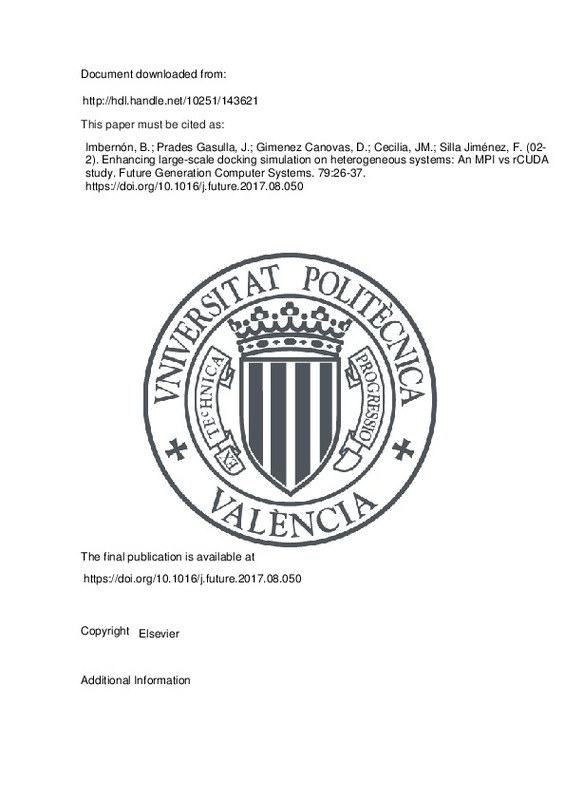JavaScript is disabled for your browser. Some features of this site may not work without it.
Buscar en RiuNet
Listar
Mi cuenta
Estadísticas
Ayuda RiuNet
Admin. UPV
Enhancing large-scale docking simulation on heterogeneous systems: An MPI vs rCUDA study
Mostrar el registro completo del ítem
Imbernón, B.; Prades Gasulla, J.; Gimenez Canovas, D.; Cecilia, JM.; Silla Jiménez, F. (2018). Enhancing large-scale docking simulation on heterogeneous systems: An MPI vs rCUDA study. Future Generation Computer Systems. 79:26-37. https://doi.org/10.1016/j.future.2017.08.050
Por favor, use este identificador para citar o enlazar este ítem: http://hdl.handle.net/10251/143621
Ficheros en el ítem
Metadatos del ítem
| Título: | Enhancing large-scale docking simulation on heterogeneous systems: An MPI vs rCUDA study | |
| Autor: | Imbernón, Baldomero Gimenez Canovas, Domingo Cecilia, J. M. | |
| Entidad UPV: |
|
|
| Fecha difusión: |
|
|
| Resumen: |
[EN] Virtual Screening (VS) methods can considerably aid clinical research by predicting how ligands interact with pharmacological targets, thus accelerating the slow and critical process of finding new drugs. VS methods ...[+]
|
|
| Palabras clave: |
|
|
| Derechos de uso: | Reconocimiento - No comercial - Sin obra derivada (by-nc-nd) | |
| Fuente: |
|
|
| DOI: |
|
|
| Editorial: |
|
|
| Versión del editor: | https://doi.org/10.1016/j.future.2017.08.050 | |
| Código del Proyecto: |
|
|
| Agradecimientos: |
This work is jointly supported by the Fundacion Seneca (Agencia Regional de Ciencia y Tecnologia, Region de Murcia) under grant 18946/JLI/13, and by the Spanish MEC and European Commission FEDER under grants TIN2015-66972-C5-3-R ...[+]
|
|
| Tipo: |
|







![[Cerrado]](/themes/UPV/images/candado.png)


